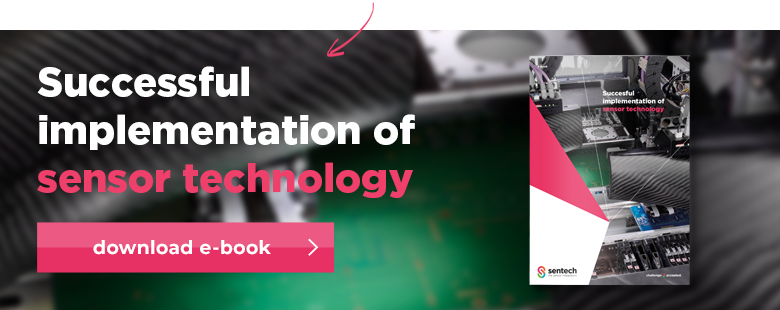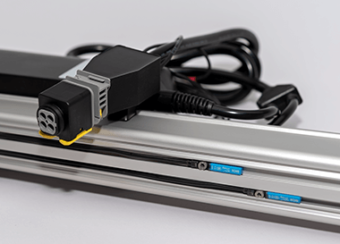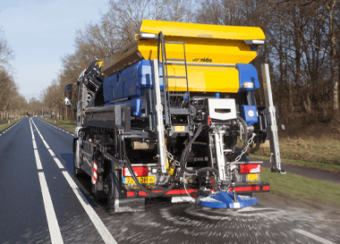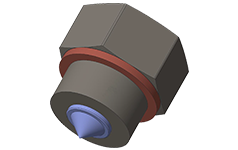Oil level sensor a prelude to autonomous driving
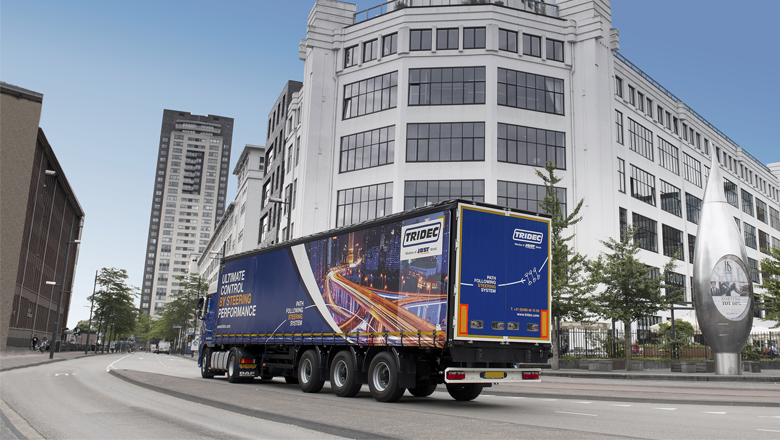 How do you integrate an oil level sensor in an electro-hydraulic steering system for semi-trailers? Tridec posed this very question to Sentech in 2016. An open collaboration quickly led to a robust sensor assembly with an optical level sensor. For Tridec, the modern steering system is the prelude to autonomous driving.
How do you integrate an oil level sensor in an electro-hydraulic steering system for semi-trailers? Tridec posed this very question to Sentech in 2016. An open collaboration quickly led to a robust sensor assembly with an optical level sensor. For Tridec, the modern steering system is the prelude to autonomous driving.
Take a look at the world of heavy transport. Discover how smart steering systems and wheel suspensions use sensors to make road transport easier, cheaper and more sustainable.
Steering system and independent wheel suspension advantages
According to product manager Francois Bronckers, Tridec is the market leader when it comes to developing and manufacturing steering systems and wheel suspensions for trailers. A trailer equipped with a steering system improves the maneuverability of an articulated vehicle.
Bronckers noted a few benefits:
- Cost advantage
“A more maneuverable combination allows transport companies to drive a larger trailer in city centers or, for instance, farmyards. Goods can then be transported with one large trailer instead of several smaller trailers. Our steering systems provide cost savings that can add up to as much as 30 percent.” - Sustainability
“Transporters need to optimize transport movements to reduce traffic on the road network and in city centers. This means that less CO2 and particulates will be emitted. We also make independent wheel suspensions where the space around the wheels is put to good use.This makes it possible to have two loading decks of 1.8 meters each, one above the other. These are the so-called double-deck trailers. These trailers are used to stock supermarkets among others, with much success. The second deck provides 60 percent more load capacity. Imagine the environmental and cost advantages.”
Recognition in Brussels
Bronckers expects growth in the market for steered trailers and for independent wheel suspensions. “In the Netherlands and Germany, many trailers are already equipped with a steering system because these are especially advantageous in heavily populated areas. Moreover, a combination trailer with the special wheel suspension is slowly starting to be recognized by Brussels.”
The product manager is referring to the climate agreements that are being imposed on all EU countries. “We expect this will stimulate sales. A successful chain with more than 1,000 stores selling inexpensive items operates entirely with our wheel suspensions.”
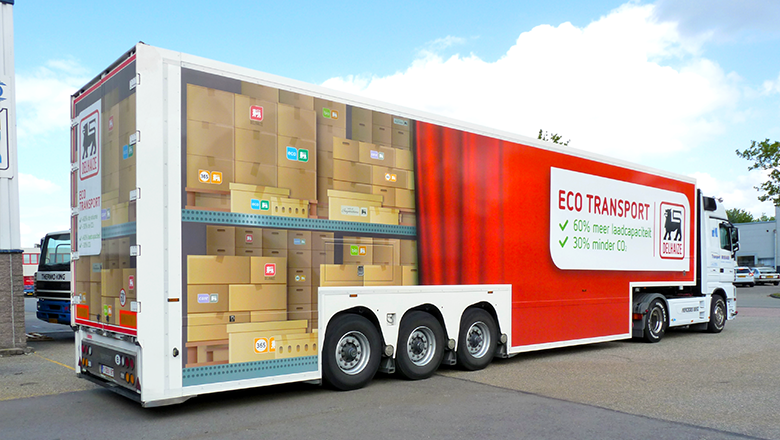
Use of standard components
Tridec delivers components to trailer manufacturers, which they then install in vehicles. According to Bronckers, the huge variety of vehicle combinations is a challenge because many trailers are developed and built to custom specifications. “We provide the minimum possible components to cover as wide a range of trailer variations and uses as possible. This is why we integrate standard parts into customized solutions.”
Koen Wich, engineer and project leader, works on these technical challenges. He and his colleagues staff the Tridec R&D department. Koen added: “Each steering system and each wheel suspension has its own unique drawing and parts list. We use standard components that are integrated in a custom fashion.”
Special transport
Legislation requires that special transport vehicles – of oversize dimensions – be equipped with a steering system to ensure it is driven safely on the road. “This is how companies that transport, let’s say, windmills avoid colliding with street furniture. We have specific products for this,” said Bronckers.
Tridec also supplies the market for extremely heavy transport vehicles. “Here we’re dealing with equipment with several hundred wheels,” he added. “In 2010, we helped an American company that had to transport a nuclear container on the narrow roads of San Diego. In America, an even distribution of the load is critical because the roads and bridges are in bad shape.”
Difficult circumstances are a challenge for liquid detection
Tridec found Sentech at an expo several years ago. Sentech account manager Sean Ram shared some challenges at the expo with the Tridec team. They discussed the sensor challenges that Tridec was experiencing. Ram said: “We talked about measuring the position of hydraulic cylinders, measuring the swing angle of the trailer, and liquid detection.”
Wich responded, “We were open to a collaboration at that time because we had a specific challenge concerning detecting the oil level in the reservoir of the electro-hydraulic steering system. We had already found a sensor, but it was not resistant to conditions such as the effects of the weather and vibrations that occur when trailers are on the road.”
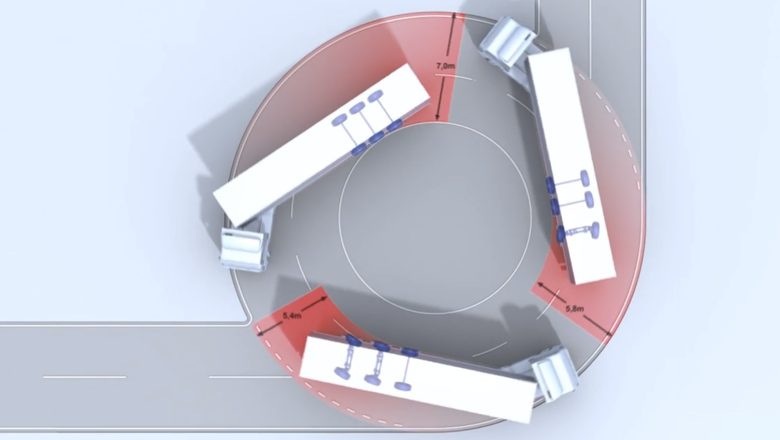
Oil level sensor for the EF-S electronic steering knuckle system
Tridec’s newest steering system is called the EF-S. Within the company, it is called steer-by-wire. The electro-hydraulic system is comparable to fly-by-wire systems of modern commercial aircraft. A computer transmits the steering input from the driver to the hydraulic system that steers the trailer axles.
A part of the system is the oil reservoir for the hydraulic oil that moves the cylinders. “We needed a second safety method, in addition to the sensor that monitors the oil pressure,” said Wich. “An oil level sensor that monitors whether there is sufficient oil in the system. A level that is too low indicates a leak.”
“You need to deal with that on time,” responded Bronckers. “A special transport vehicle with a defective steering system on the road will make the news.”
Optical liquid detection product requirements
Wich described the challenge with the level sensor. “We had a usable sensor, but it was unsuitable for industrial use. We drew up a document of product requirements for Sentech.” The sensor solution must meet certain requirements. Sentech dealt with these as follows:
- Robustness. The infrared sensor is shielded with a stainless steel housing and sturdily secured with a welded nut.
- Reliability
The robust implementation with thicker cabling and an industrial connector ensures the sensor continues to work reliably for many years. The DEUTSCH connector is often used in agriculture. It is an automotive standard from the renowned manufacturer TE Connectivity. - Installation dimensions
The installation space for the sensor assembly was limited. The housing and electronics were tailored to the required dimensions. - Integrability
The plug-and-play sensor solution was delivered as a complete assembly that can be installed in no time. The sensor solution can easily be used in other applications for level measurements by just changing the weld nut. - Affordability
The complete solution had to be affordable yet still work reliably. This is why Sentech stuck with Tridec’s first choice: a simple yet very reliable infrared sensor from IST. Sentech also put together a sensor assembly that was as efficient as possible.
How does the level detection work?
Ram explained the working of level detection with optical sensors. “The optical sensor solution is the successor to the mechanical float. The infrared sensor (with no mechanical parts) contains a transmitter that emits a continuous light signal. The same sensor body contains the receiver that catches the reflected light as long as the hydraulic oil is at the proper level. The signal is interrupted when the oil falls beneath the level of the sensor. And that triggers a fault message.”
Wich added: “The driver has a robust hand-held device for operating the steered trailer axles. It displays any fault messages that occur, including a potential problem with the oil level. The driver receives the instructions required to handle the issue depending on the fault. For example, ‘stop immediately’ or ‘call roadside services’.”
Open collaboration quickly leads to a robust level sensor
The development time from idea to integrable product took three months. At the end of 2016, Tridec made its first delivery of the EF-S system including the robust level sensor.
Bronckers and Wich are happy about the collaboration with Sentech. Bronckers: “Tridec is an innovative technology company and needs suppliers that have real knowledge in their field. We understand steering systems, but not sensor technology. That’s why we look for knowledge partners who can bring something extra to the table.”
Wich added: “I really enjoyed our collaboration with Sean and his colleagues. They know exactly how the tech works. Their team didn’t try to sell us a product; they simply looked for the best solution for us. We really know what we want and Sentech found it in an excellent and solution-oriented manner.”
Ram confirmed: “We share an open agenda. I appreciated that with Francois, Koen, and the other Tridec staff. Everything begins with the application. Openly sparring with each other about the challenge led to the most efficient solution.”
EF-S is a stepping stone to autonomous driving
The first experience with Sentech led to a structured collaboration on sensor tech. Wich believes Sentech provides a good example of the available options in sensor technology.
According to Bronckers, there is more to come. “Currently, we are working on other comprehensive applications that will need more sensor technology. For example, we are testing a lidar sensor system from Sentech. EF-S is a stepping stone to autonomous driving. This will require even more sensors.”
Ram responded: “The basis was a clear expectation pattern with the elements that you want to measure and the associated conditions. We compared lidar and radar. For this application, we discovered that lidar provided the best results with respect to the reliability of the measurements.”
Successfully implement sensor technology
A successful implementation of new sensor technologies can be a real challenge. You want to improve your machines. How do you use data to increase efficiency? What is the future as an engineer and what are the sensor trends?
In our e-book you can read the answers, including practical examples of sensor issues and solutions.
Challenge yourself and take your time for this free download.

